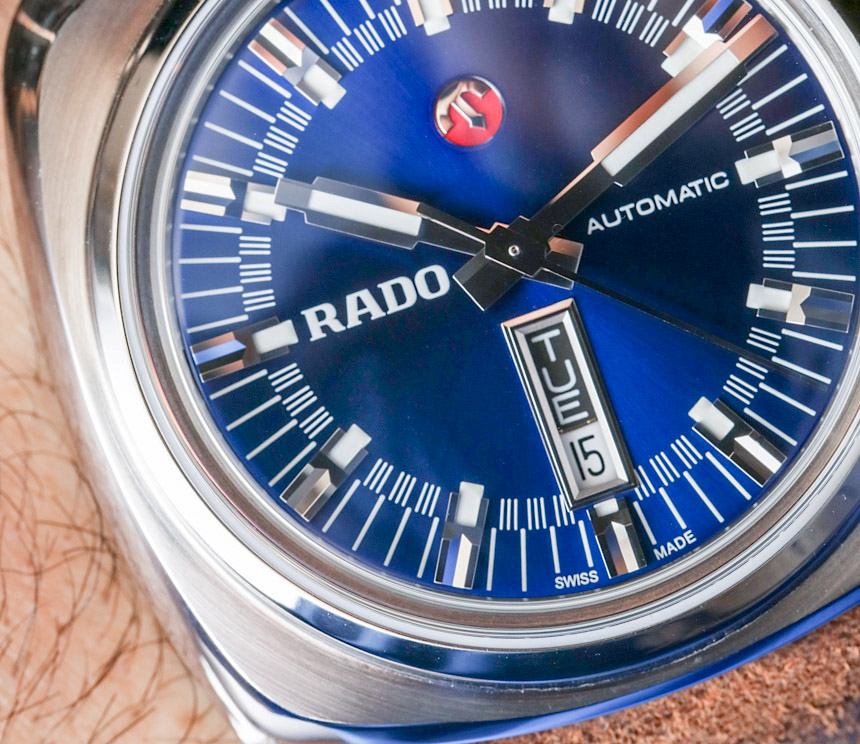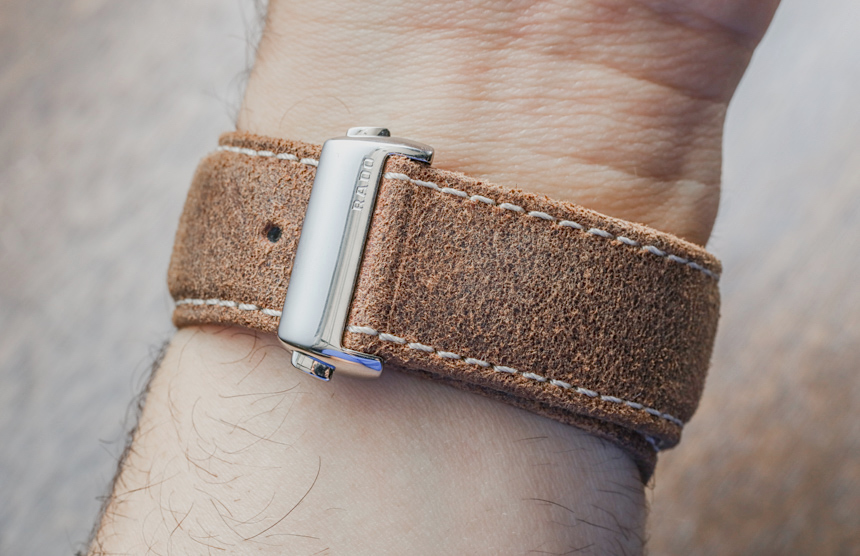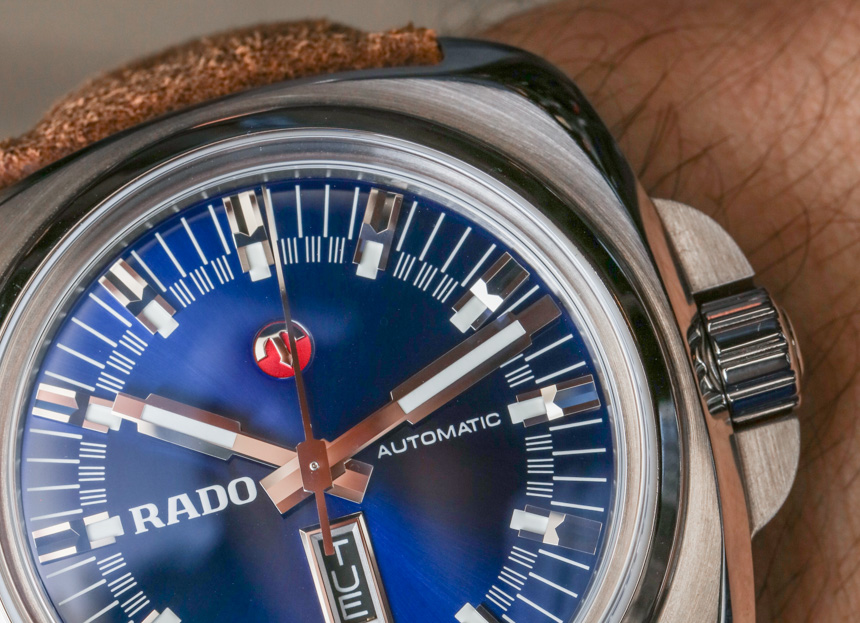
Rado, a brand that despite its history and watchmaking chops often gets overlooked, recently added a limited edition blue dial variant to the Rado HyperChrome 1616 watch offerings. First released at Baselworld 2016, the HyperChrome 1616 is inspired by the brand’s Cape Horn collection from the ’60s, with 1616 coming from the year Cape Cod was discovered. In addition to its distinctive case shape, Rado has also used interesting materials for the HyperChrome 1616.
As far as vintage inspired timepieces go, the Rado HyperChrome 1616 follows original shape and design elements faithfully even if materials and proportions have been updated to suit modern preferences. The pronounced cushion case is now 46mm x 45.5mm, so a square for all practical purposes. The alternating polished, brushed, and polished again finishing on the bezel helps give it some visual interest, as leaving it plain would have made the wide bezel look a tad unrefined. Additionally, by using a sloping bezel, Rado can hide some of the 13.7mm of thickness. The lugs are extremely short to maintain the square form and also to help adapt the case to a wide range of wrist sizes. This is definitely a watch that has presence on the wrist, but is much lighter than you would expect thanks to the case material.
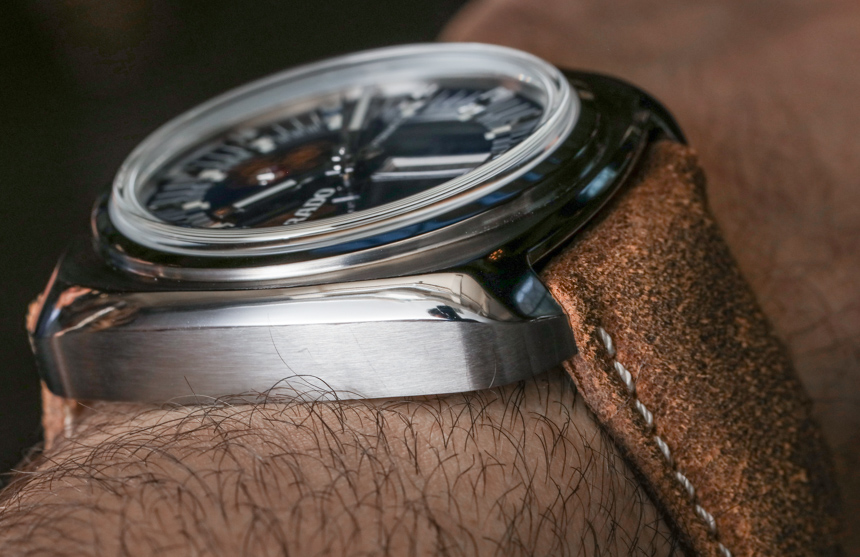
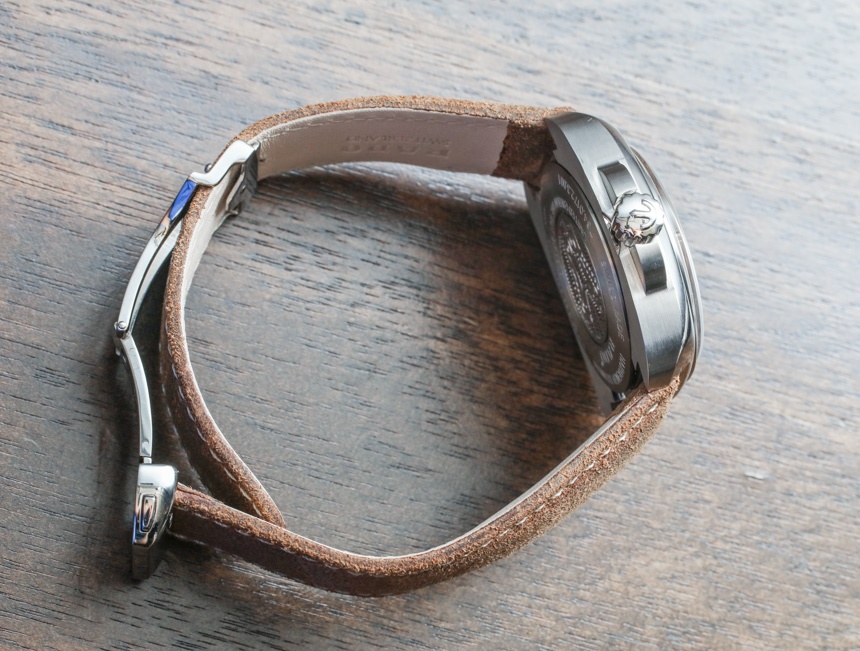
The case is machined from hardened titanium, which has a hardness of up to 1,000 Vickers (Vickers is a unit of measurement for the hardness of materials). To put this into context, standard stainless steel has a hardness of about 200 – 250 Vickers. So, in addition to being harder and more damage-resistant than a steel case, the use of titanium means that despite a 46mm x 45.5mm x 13.7mm case, the watch only weighs 106 grams with the strap. The case also has crown guards, which were not present in the predecessor but are useful given the size of the watch. The design and finish of the crown guards result in a certain simplicity that complements the case well.
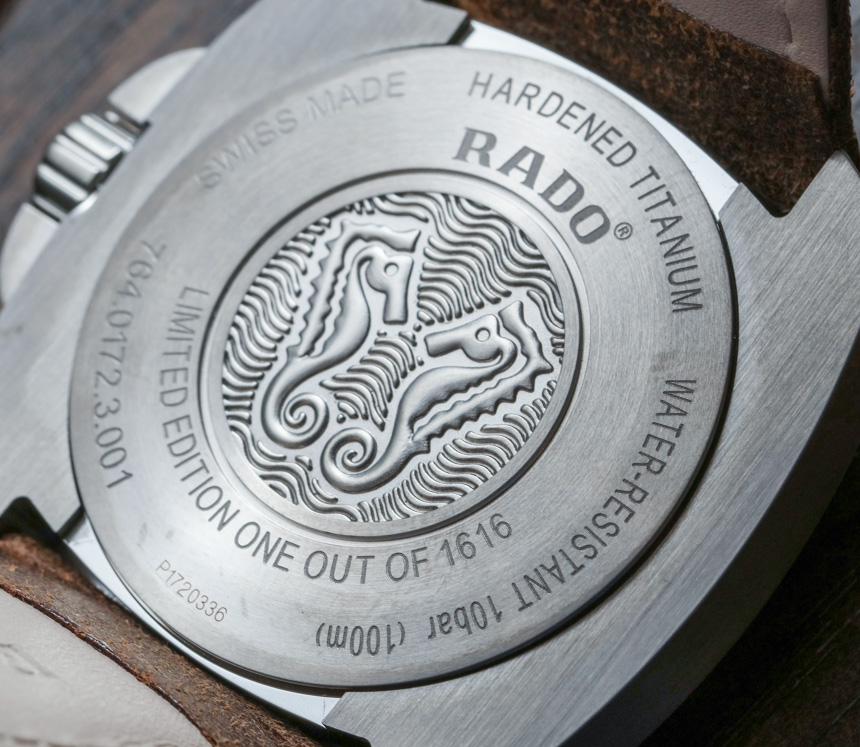
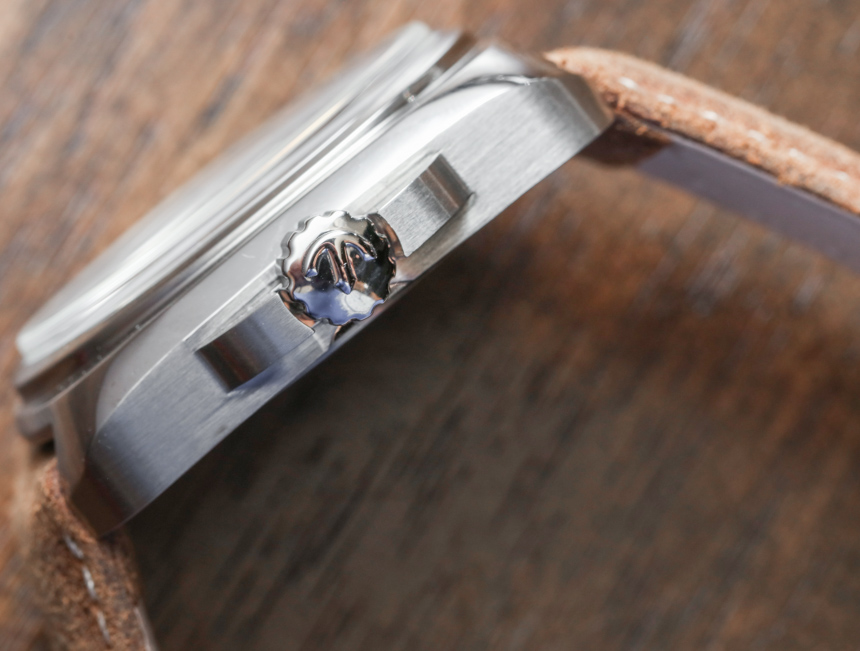
The crown itself is large, ergonomic, and engraved with the Rado anchor. The flat screw down case back is brushed with a pair of seahorses engraved and the expected complement of words – “Hardened Titanium,” “Limited Edition,” serial number, and so on. And if you haven’t already guessed, the watch is rated to 100m of water resistance. I’ve been unable to ascertain if the two seahorses have any significance to the brand or the model but they’re an interesting choice indeed.
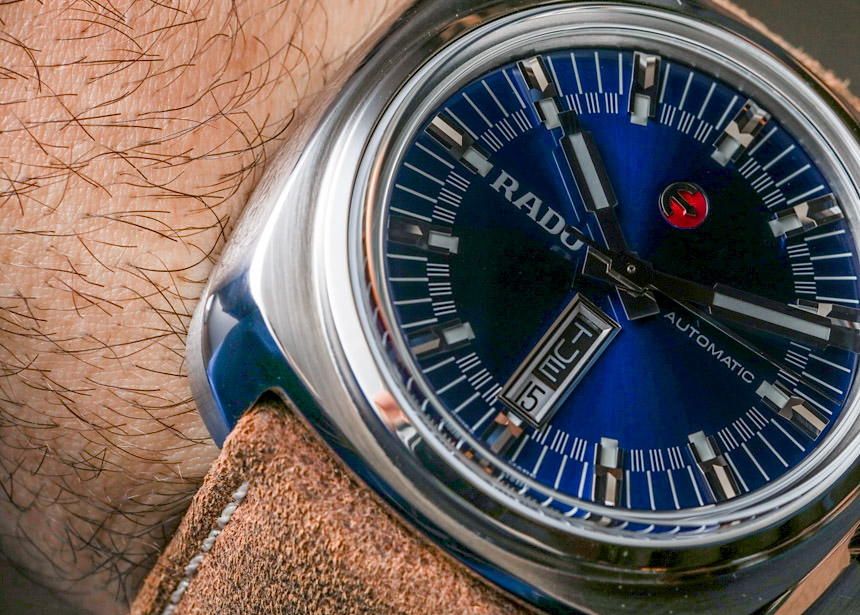
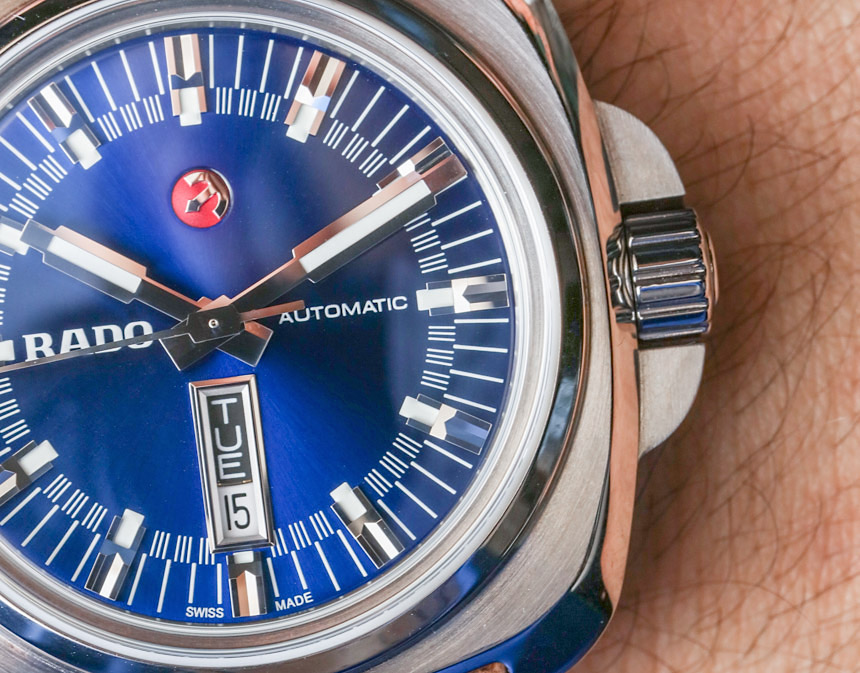
The highlight of this particular watch, compared to other Rado HyperChromo 1616 offerings, is the blue sunburst dial. The vibrant blue color will be familiar to watch collectors with a proclivity for blue divers but somehow manages to enhance the retro look of this watch. The design of the dial is faithful to the predecessor and gives the Rado HyperChrome 1616 away as a vintage inspired piece, especially with the vertical day-date window. The hands and applied markers are polished steel and filled with Super-LumiNova. The choice of the day-date colors – black for day and white for date – while not particularly good looking to me, are true to the original. I suspect that the date window is a love or hate feature, but I can appreciate the effort Rado has taken to stay true to its roots.
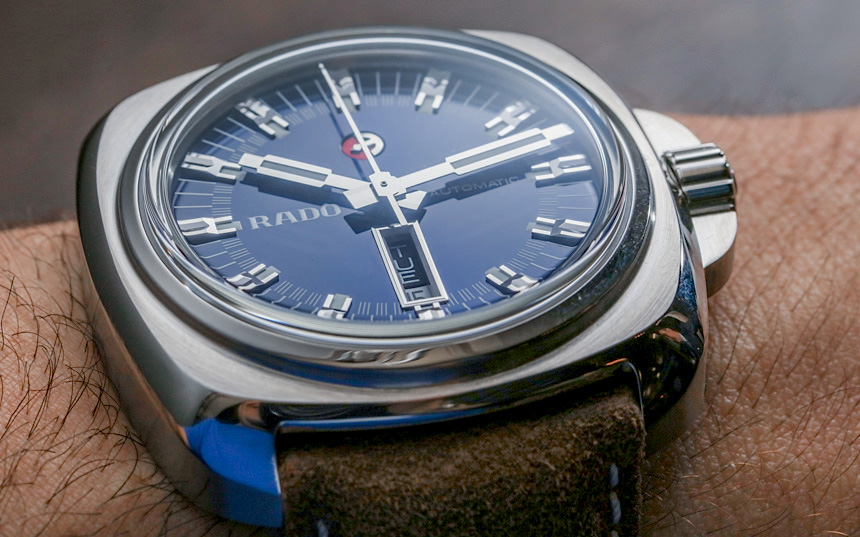
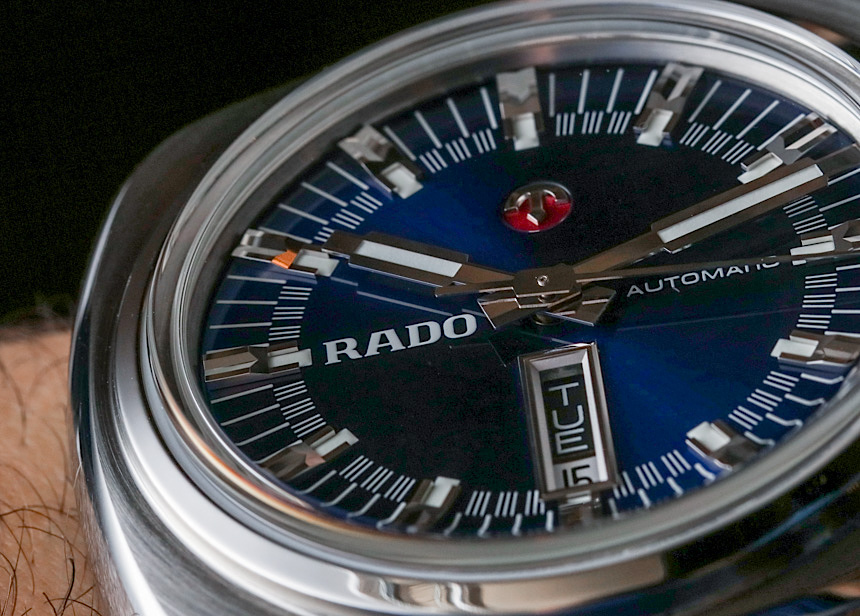
The minute track is visually interesting, for lack of a better way to phrase it and while it might not be conducive to accurate time reading, it definitely lends the dial some visual interest and was first seen on the Rado Cape Horn 1000 from 1971. My favorite feature of the dial is the little anchor at 12 o’clock which actually rotates about the center of the red circle it sits within, but then again, I have a soft spot for interactive watches even when said interaction serves no practical purpose.

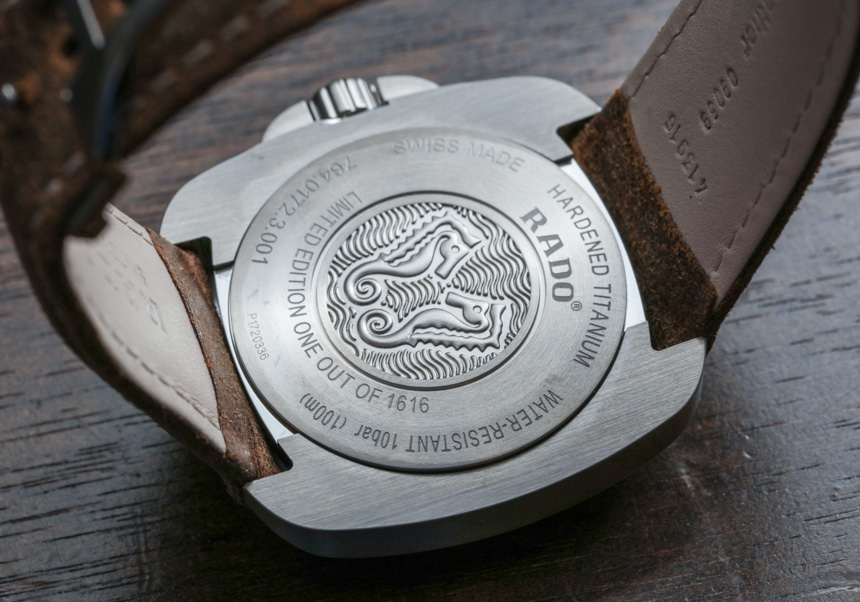
Under the dial, the Rado HyperChrome 1616 is powered by the ETA C07.621. Essentially this is a modified version of the Powermatic 80 to add day and date functions. The Powermatic 80 is itself based off the ETA 2824 but with improvements made that allow it to boast an impressive 80 hour power reserve. Like the watch itself, the movement is a study in the use of new materials for improvement. The jump in power reserve from 42 hours to 80 hours was achieved by using a newer escapement with low friction materials and a Nivaflex NM mainspring .
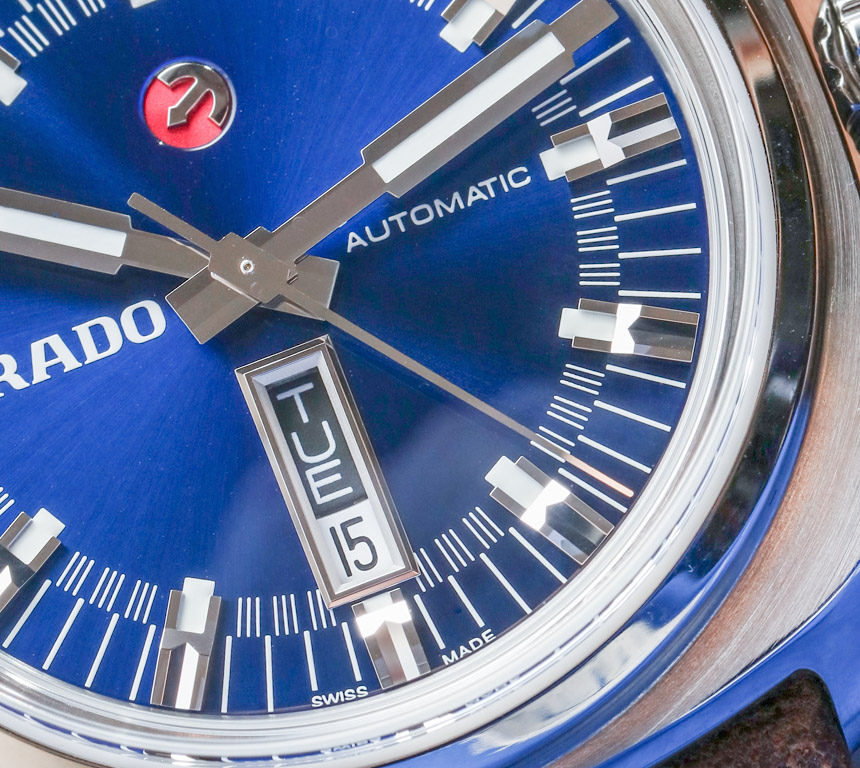
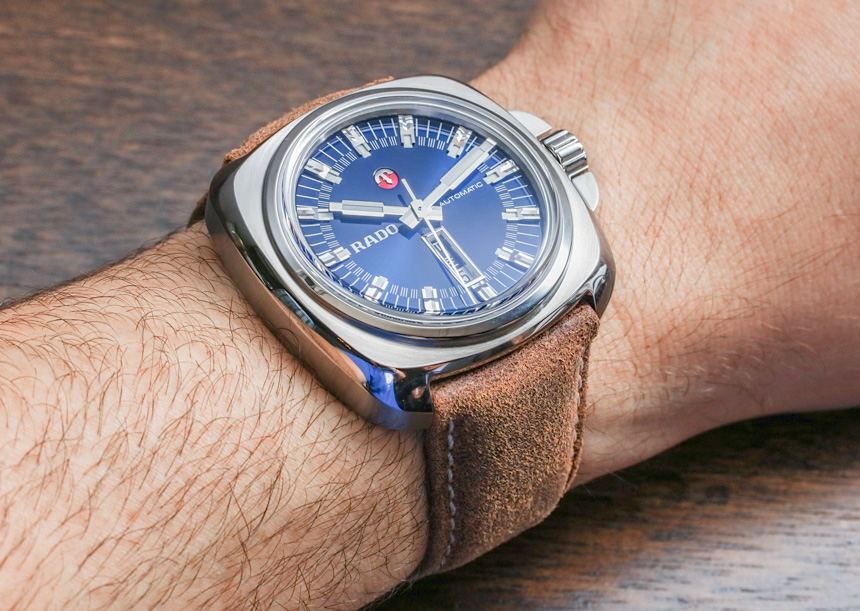
The Rado HyperChrome 1616 is unapologetically retro and that makes it a love-hate watch I think. Either you get it or you don’t. Either way, what is hard to argue with is the interesting mix of materials and technology it offers. I’ve always believed that a vintage inspired watch should try and incorporate modern technology where possible to make the finish and reliability better and Rado has delivered in spades with this watch. As I’m sure some of you would have expected by now, the Rado Hyperchrome 1616 with a retro blue dial has a limited production run of 1,616 pieces and ships with a distressed leather strap and deploying buckle for €2,930. rado.com

